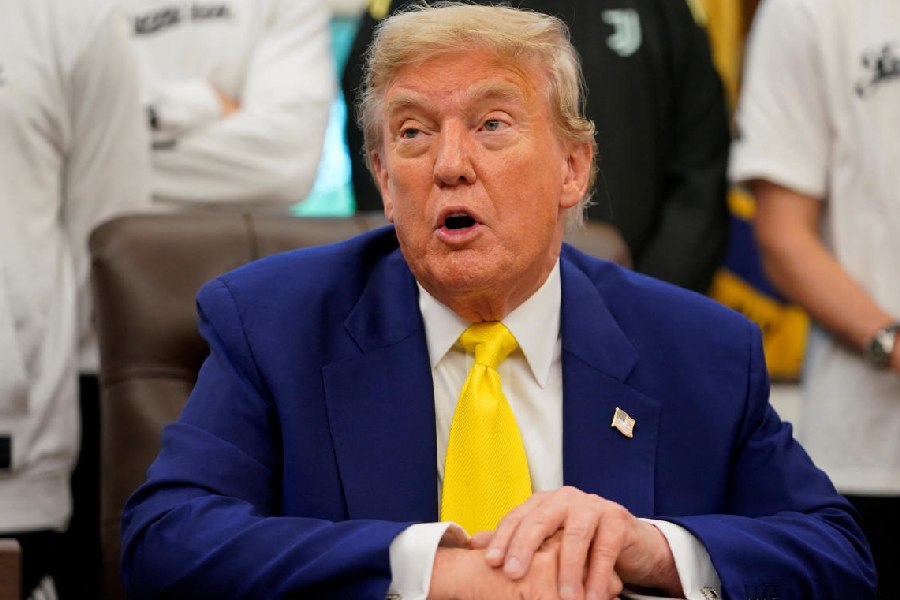|
|
| Iconic power |
Visionary individuals have always had both admirers and detractors in good measure. The sheer force of their life’s work demands that we assess our position with respect to theirs. Consequently, in many instances what we make of these people is far more revelatory of ourselves than of the life being examined. In modern times, no person embodies this litmus test better than Mahatma Gandhi.
Some six decades after his death, the imprint of Gandhi on our public life is at best faint and nebulous. In a similar sense, with the end of the Age of Empire, Western engagement with Gandhi’s role as a pioneer of decolonization has also receded. Nevertheless, the Mahatma’s ability to generate strong opinions has not diminished one bit. In November last year, we saw the American president, Barack Obama, make a much publicized visit to Mani Bhavan in Mumbai. While Obama’s intention was to reinforce his claim as a political legatee of the American civil rights movement, a White House incumbent paying homage to Gandhi would have left many Western intellectuals muttering under their breath. In recent days, a particularly virulent strand of this distaste of Gandhi has appeared in an article in The Wall Street Journal by the British historian, Andrew Roberts.
Purportedly, in a review of Joseph Lelyveld’s Great Soul: Mahatma Gandhi and his struggle with India — an analysis of Gandhi’s life in South Africa and India — Roberts presented a rant with only a tenuous link to the contents of the book. To make matters worse, the lurid leaps of imagination of Roberts have been thoughtlessly attributed, in many media reports, to Lelyveld’s book, leading to much speculation and heartburn. Rather than dignify the many falsehoods in the ‘review’ by disputing them, it is much more useful to examine the underlying intent. Such an examination is best conducted via a brief review of the career of Gandhi’s image in the United States of America.
In the aftermath of the slaughter of World War I, there arose an American interest in the novel methods of political agitation deployed and lead by Gandhi. In a famed lecture in New York in 1921, the Christian minister and pacifist, John Haynes Holmes, declared Gandhi to be the greatest man in the world, one who reminded Holmes of Jesus Christ. Such fervid celebration of Gandhi by the pacifists also generated a backlash from opponents who saw the absolutist position of pacifism as woolly-headed and naïve. In particular, conscientious objection to war by the pacifists was repudiated as an irresponsible and dangerous doctrine. To these critics, Gandhi was also a pacifist.
As far back as his time in South Africa, the arch-pragmatist that he was, Gandhi recognized the problem with this conflation and strove to distinguish his creed from that of the pacifists. Thus, when his movement began to be described as ‘passive resistance’, he perforce coined the term satyagraha to distinguish it as an active moral force. Nevertheless, the association in the American mind of Gandhi with the pacifists was the source of much misunderstanding of what ahimsa represented. American criticism centred around the terminological misrepresentation of Gandhi’s nonviolence as an other-worldly, pusillanimous attitude unbefitting the Western mind.
As an outcome of the debate on pacifism in the 1930s, the prominent theologian and admirer of Gandhi, Reinhold Niebuhr, turned into his most significant American critic. Addressing the question of the moral position of man in an immoral society, Niebuhr saw no essential difference between violent and nonviolent resistance since they both involved ‘coercion’ of some kind. In a remarkable misreading, Niebuhr held nonviolence to be morally irresponsible as he saw it as the shirking of social obligations. In contrast to this putatively Gandhian position, Niebuhr held that it was necessary, almost inevitable, for one to use force to further justice in the world. This view has persisted in Western political doctrine, the latest example being the action against Libya.
While the debate between pacifists and their critics continued, a far more significant and effective strand of Gandhi’s influence emerged amongst that most oppressed of people, the African Americans. While the legacy of the American civil rights movement is most prominent in our minds, African American interest in Gandhi went back much earlier. For decades prior to the 1960s, African American leaders were following the Indian struggle for freedom with keen interest, as they saw their predicament to be homologous to that of colonized Indians. Gandhi’s successful deployment of satyagraha made an impression and, over the years, many African American leaders travelled to India to seek his guidance on the race question in the US. This long lineage of interest and interaction meant that a fertile and receptive ground was prepared within the African American community for Gandhian ideas. Thus, when in 1950, the orator and scholar, Mordecai Johnson, delivered a lecture on Gandhi and India, it had a “profound and electrifying” influence on the life of a young man in the audience, Martin Luther King Jr.
In Gandhi’s message, King had found a method to convert his Christian idea of love, agape, into a potent force for social and political change. Trained as a Christian theologian, King was deeply influenced by Niebuhr. However, King easily came to recognize that Niebuhr had intellectually erred in interpreting Gandhi. What Gandhi had advocated, and indeed practised, was “not nonresistance to evil, but nonviolent resistance to evil”. Between the two positions, King recognized, there was “a world of difference”. Although King decisively demonstrated the intrinsic value and practical efficacy of Gandhian ideas, the attacks on Gandhi never abated. They took on particular vigour whenever the Mahatma’s nonviolent ideas met with public support.
Thus, if Gandhi is said to be not a Mahatma, but “really a lecher, racist, hypocrite, fool, and faddist”, the reader should not attribute it to the febrile imagination of Andrew Roberts. In fact, this characterization dates from some three decades earlier, when the practice of wild accusations and innuendo against the Mahatma reached a peak. The proximate provocation was the success of Richard Attenborough’s 1982 film, Gandhi, which won a clutch of Oscars. Appalled by this popular approbation of the film, and by implication the philosophy of its subject, the film critic, Richard Grenier, launched a scurrilous attack in the magazine, Commentary. Although it lacked the intellectual métier of a Niebuhr, Grenier’s heady swill of “half-truths, quarter-truths and untruths”, it was eagerly lapped up by many commentators who joined the fray. In the words of the distinguished historian and Gandhi biographer, B.R. Nanda, “the certitude of these commentators seems to have been directly proportional to their ignorance of the subject”.
While one may easily dismiss the hatchet jobs of Grenier and Roberts, consistent misrepresentation of Gandhi is not confined to the popular press. While Western intellectuals are usually precise in their hermeneutic understanding of Western ideas, many of them have approached Gandhi with all the care of a medieval lobotomist. In 1977, writing in the aftermath of the protests against the Vietnam War, the political theorist, Michael Walzer, wrote a famous treatise on Just and Unjust Wars. Unlike the careful arguments he presents in the main body of his text, Walzer relegated a discussion on nonviolence to a short, cursory dismissal in an afterword. Here, Walzer vaguely refers to Gandhi’s statement on the issue of what the Jews should have done under Nazi oppression. Characterizing Gandhi’s advice to the Jews as “perverse”, Walzer claims that the Mahatma asked the Jews to commit suicide instead of fighting back against the Nazis. In arriving at this strange assessment, Walzer uses a citation at two removes. If he had troubled himself to look up the source, that is, Louis Fischer’s Gandhi and Stalin, Walzer would have realized that the Mahatma never said anything of the sort. Rather, Gandhi had argued that “the Jews of Germany made the mistake of submitting to Hitler”.
At the heart of these attacks on Gandhi lies the relationship between moral and political power. Unenamoured by the mechanisms of institutional politics, Gandhi located the source of legitimate political power squarely within society, that is, the free and unencumbered moral approval of the people without the threat of coercion or violence. By doing so, Gandhi refused to play by the rules of Empire and eventually undermined its legitimacy. In contemporary times, rightwing conservatives of the likes of Andrew Roberts probably look back wistfully on the heyday of Empire and detest Gandhi for his role in its destruction.
But there is an even greater cause for this animus. Over the years, Gandhi’s example has had much appeal within sections of American opinion. This has aroused the ire of conservative critics of Gandhi’s politics who believe in Western supremacy backed up by the power of the mailed fist. It is the perennial nightmare of these thinkers that their own societies might accept the values of satya and ahimsa. A Mahatma alive in American minds is a far greater threat to American dominance of the world than any possible attack from outside its borders.











